https://www.youtube.com/watch?v=vUlvrX4R3jI
10 Things You Didn't Know About Outlets
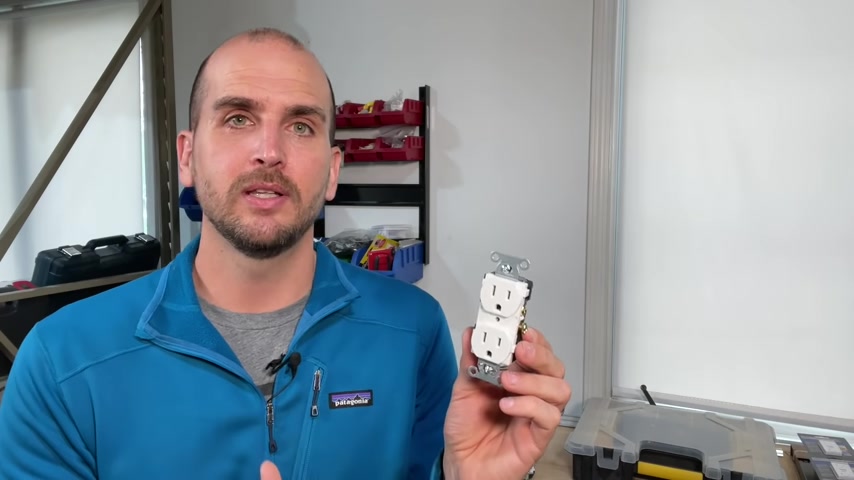
So number one on the 10 things you might not know from a standard electrical outlet is what this little tab does between the two screw terminals .
So it really doesn't matter what brand or type you have here are three examples with an eaten residential grade has a tab , eaten industrial grade has a much larger tab and then a Hubble commercial grade with the tab on the reverse side .
Now , what that tab does is if you removed it from the hot and neutral side of your outlet , you then would separate the top receptacle from the bottom receptacle and now they can work independent of each other .
And this is often called a switched outlet .
You actually might have had these in a house or an apartment you lived in over the year where you had a bedroom or a living room that had no ceiling lights .
It was super dark and you had a light switch on the wall that seemed to not do anything .
Well , that light switch might have actually controlled the top or bottom receptacle on all of the outlets within the room .
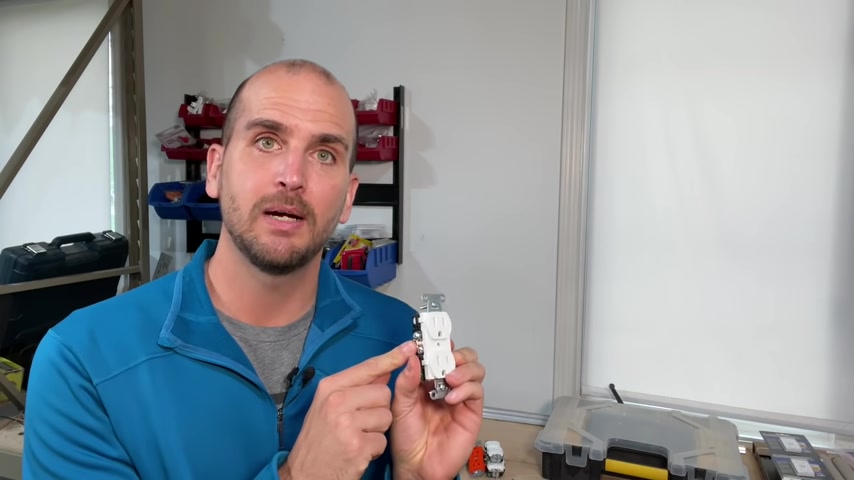
This is much more common in little older homes in my area , ranch style homes built in the 19 fifties or sixties .
It was pretty common for the living room and possibly even the bedrooms not to have ceiling lights , but they had switched outlets that you could plug lamps into .
But associated to this , it's also very common and I have purchased homes in the past where somebody updated the outlets .
It was a room that was supposed to have switch outlets .
It had a switch on the wall , but they just replaced the outlet without removing the tab .
So now all the outlets are powered all the time and the light switch literally doesn't do anything .
So maybe something to look out for if you have that issue around the house .
But let's move on to number two .
So number two deals with a feature called speed wiring and you can see that by these holes here and the slots also relate to this feature .
It's called a few different things by different brands .
But speed wiring is one of the most common terms .
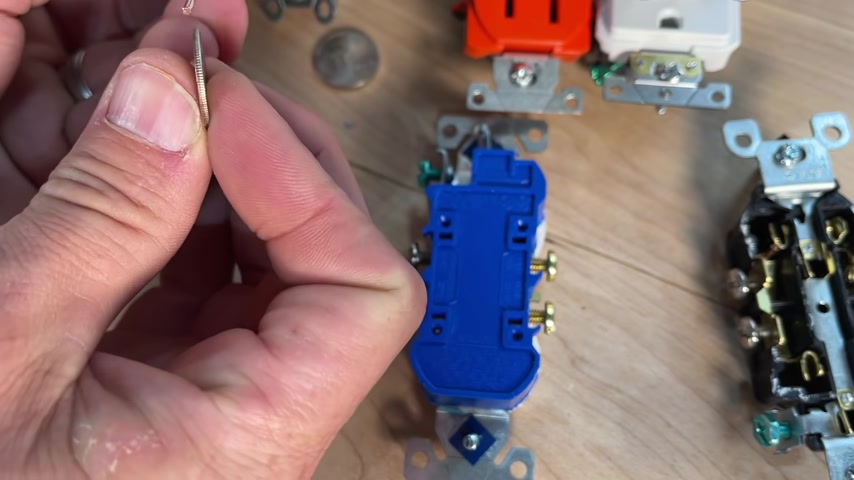
Now this only works with 14 gauge solid core wire .
If you do not know whether or not you have 14 gauge , you can use the nickel and dime trick comparing the thickness of a dime .
So if that matches up , you have 14 gauge , if it matches up with a nickel , then you have 12 gauge .
So we have 14 gauge here .
Now speed wiring I do not recommend , but it is very common .
So let's at least talk about it .
So it's that easy as you just push it into the hole .
And now you are wired .
The second point is associated to some confusion in that these screw terminals are not associated with holding in this wire when you use speed wiring .
So I will tighten in the screw terminals because you should never leave screw terminals just hanging out independent on if you're using speed wiring or not .
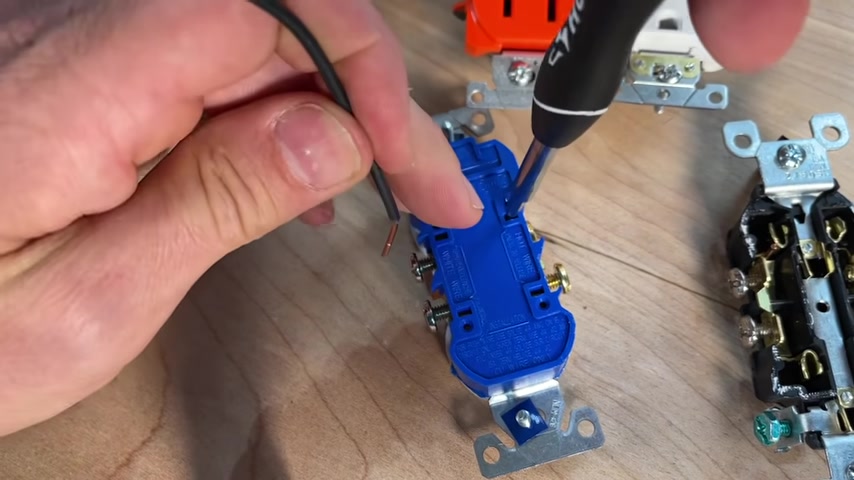
But me tightening in this wire does not hold this wire in .
So point number two is that the screw terminals are independent of speed wiring .
Point number three is that speed wiring can be removed .
So I can put a screwdriver in this slot and remove the wire .
But that feature is one and done .
So I should not use this outlet again and use that speed wiring because it should only be used once .
Now , why is that ?
We'll look at the internals of this Levitin outlet .
So with speed wiring , you really only have this tab that's biting into the wire and holding it in place .
So when you push through the spot , you're pressing that tab open and you might deform it , thus making the wire loose the next time you actually apply it to speed wiring .
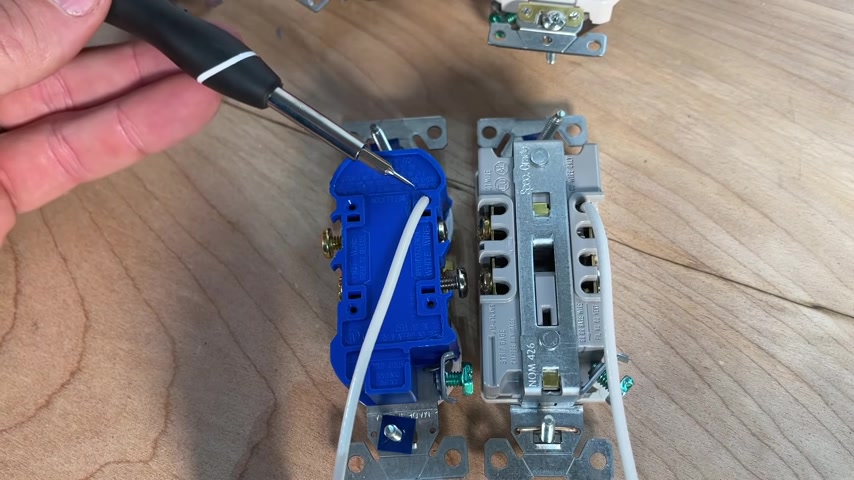
So that's why with point number three , if you are using speed wiring , which I don't necessarily recommend it is a one and done .
Feature .
Point number four builds on speed wiring but shows the other acceptable ways to wire .
So there's three different ways to wire an outlet .
We're showing speed wiring , which we just reviewed and I'm not the biggest fan for it .
This is a residential grade outlet with , with the speed wiring built in .
Here's a commercial grade eaten outlet with back wiring , which is another method .
And the method I prefer back wiring is , is again just a straight strand of copper .
I'll take that out to show you that's just a straight strand of copper and then it is being placed , we'll get that plate to come between the plate and the screw itself .
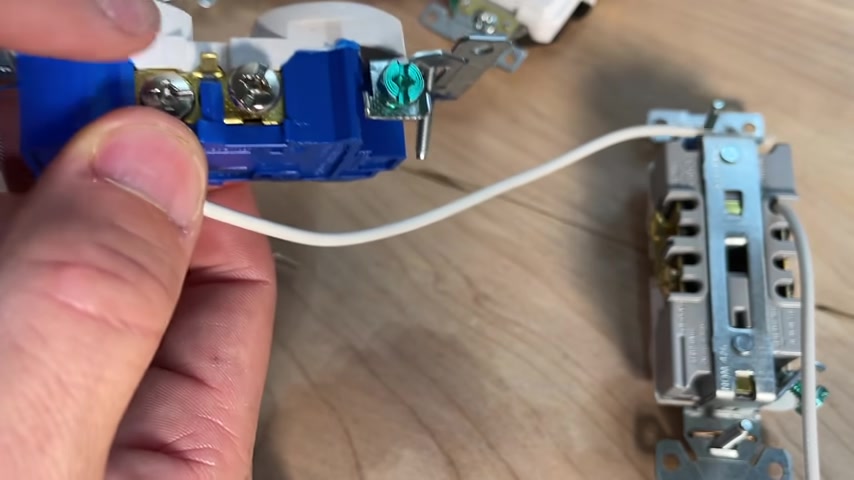
So the screw tightens in and that is what holds that wire in place .
I prefer commercial grade outlets and I prefer back wiring .
I think back wiring produces the most consistent and safest result .
But that is just my opinion and I am not a licensed electrician .
And then the last way to wire is the most common , but you might not know there are some features within different receptacles that can help you do this .
And that is called side wiring where you put the wire underneath the screw .
And this one specifically , you could strip the insulation off and get your copper exposed , use this hook here and then actually bend your wire around the screw terminal .
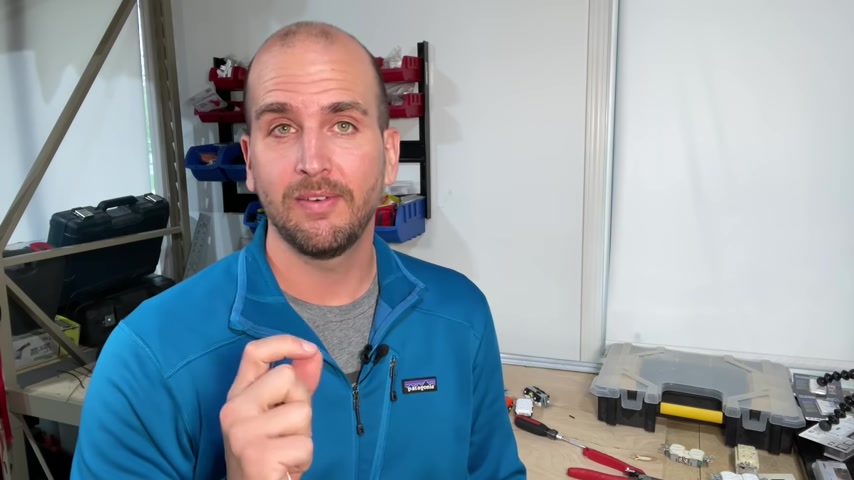
And now you have a shepherd's hook or AJ hook in the clockwise direction around the screw terminal and you're ready you're ready to tighten it .
Now , remember you want to go in the clockwise direction for this third and most common type of wiring , which is side wiring .
So we'll hit number five really quick and I do have a favor to ask of you guys if you have some time .
But number five is associated to the stripping guide that you'll find on the back of the housing for pretty much all outlets that are out there .
Now , the thing to know is that for this stripping guide , for this specific outlet , it's for one type of wiring .
So we just went through speed wiring , back wiring and side wiring .
And specifically for this one , when I matched that up , it is actually for the back wiring feature .
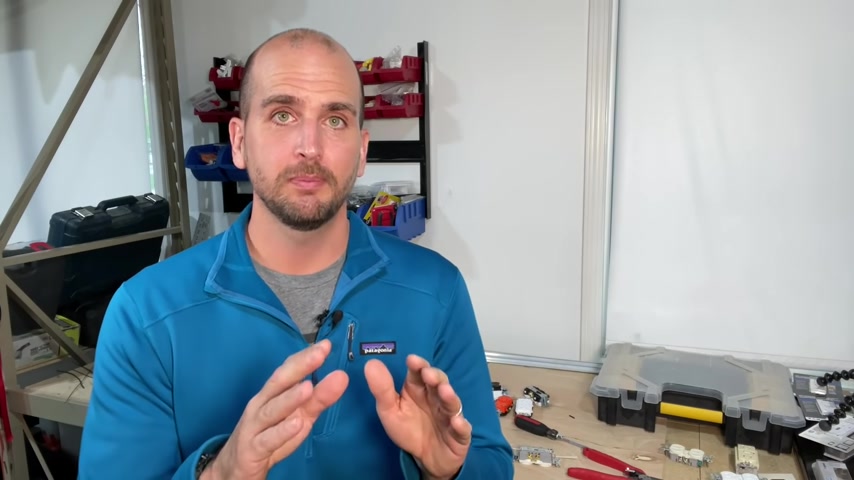
So if I wanted to do side wiring , I actually need a little bit more insulation removed to do that effectively .
So the strip guide can be very handy , but just make sure you're matching up how much insulation you're removing to the type of wiring you're doing .
So the favor I have to ask of you guys is feedback .
One , we always welcome your comments and get great feedback from the audience which I really do appreciate .
But specifically on this video , I really want to see the the experience level of the viewer .
So first thing I need to know is just if you're a pro or ad I wire , so that's all you got to put down pro or D I wire associated to your experience level .
And then a number following that and that number is the number that you didn't know .
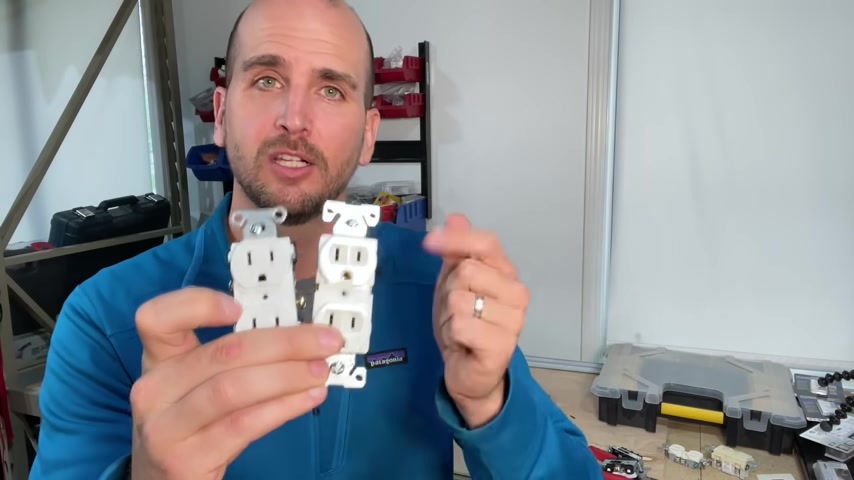
So if you go through all 10 of these points and you actually knew everything except for three of those , just put pro three or D I Y three , then I'll know the experience level and that will really help to target the correct video and content as we move forward .
So that's it pretty simple .
Just a little feedback down below would be greatly appreciated .
But let's move on to number six , number six associates to why some designs are not flat , like this one , this one's a flat face , but this one is not .
Let me show you why .
So the reason for this is to actually help especially two prong plugs or adapters such as this find the slots .
So you can see the angles if you push against , want to set you in the correct spot .
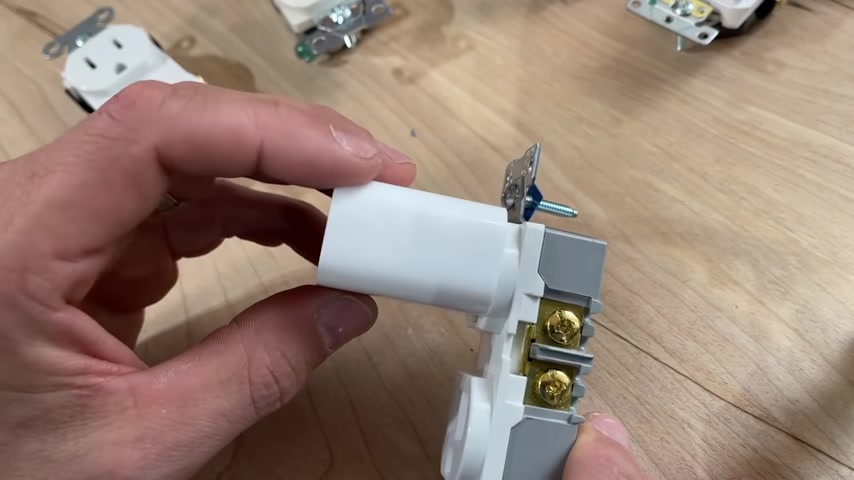
So especially in the dark , you're trying to plug something in , this helps you find the correct position and get your plug securely fastened in the outlet , small design change , but actually pretty handy .
So number seven associates to the word Deora now Decorah , usually for most people just means a more modern contemporary looking flat , rectangular faced outlet compared to your standard duplex .
So most people say , hey , do you want standard duplex or Decorah if you're building a home or if you're working with an electrician and they're doing some work for you .
But Deora is actually a trademark by Levitin , which is only one brand and they have a whole line of different components that go under the Deora series .
This is very similar to other industries like Bobcat .
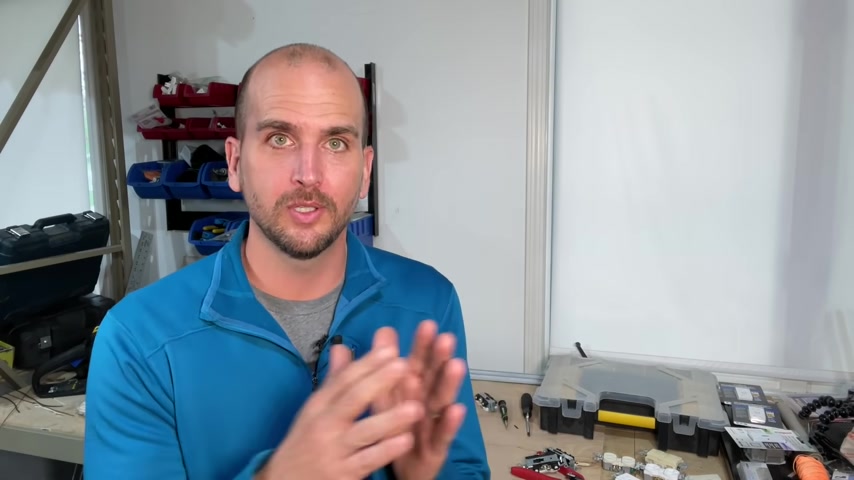
Hey , go grab the Bobcat and they mean a skid steer loader or completely different industry .
Can you give me a Kleenex when they actually mean tissue paper ?
But because one brand was so common and so dominant , their name kind of became synonymous for one product within the industry .
So a little fun fact for you .
But now we're hitting the home stretch with number eight .
I actually showed this in another video I had , but I think it's kind of cool , not super useful but pretty interesting .
And that is many eaten components like light switches and outlets like this one have built in wire strippers for number 14 gauge wire and number 12 gauge wire .
Now not wildly useful in terms of speed .
I don't think anybody's gonna be rewiring their house using this at their wir strippers .
Maybe in a pinch , maybe if your wire strippers were left in your truck and you just had one more wire to do .
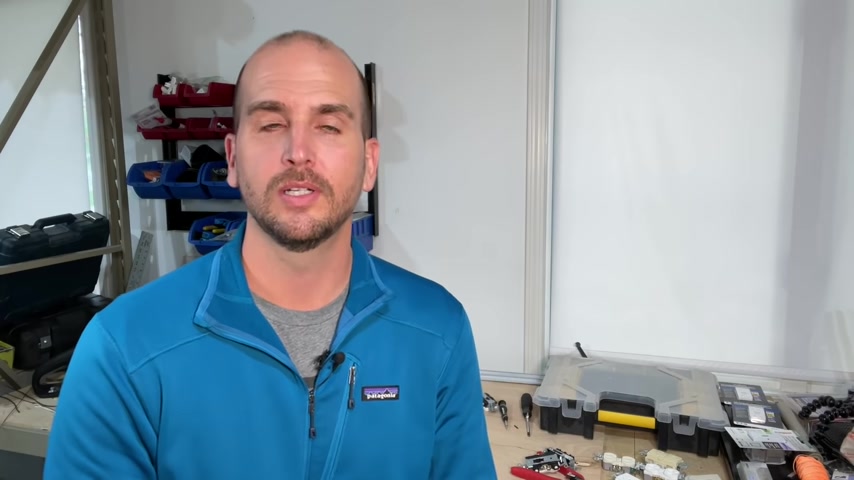
This comes in useful where you can strip the wire , get the outlet mounted and go on about your day .
So you have to at least give it to Eden for some creativity in their design .
Now , number nine goes to a great debate within the community and that is , do you install your outlets ground facing down or ground facing up ?
Now , this was a video I've done in the past as hundreds of thousands of views and a ton of comments , I also had people vote on what their preference was by hitting the like or alternatively , by hitting the dislike button on the video .
And from that , it looks like about 75 to 80% of people do ground facing down and the rest ground facing up .
Now , this is not called out nationally by N E C .
So there is no standard to go off of unless you're on like a commercial job , maybe a hospital job .
And then specifically for that job , they're calling out in the specification for the electrical system on that job .
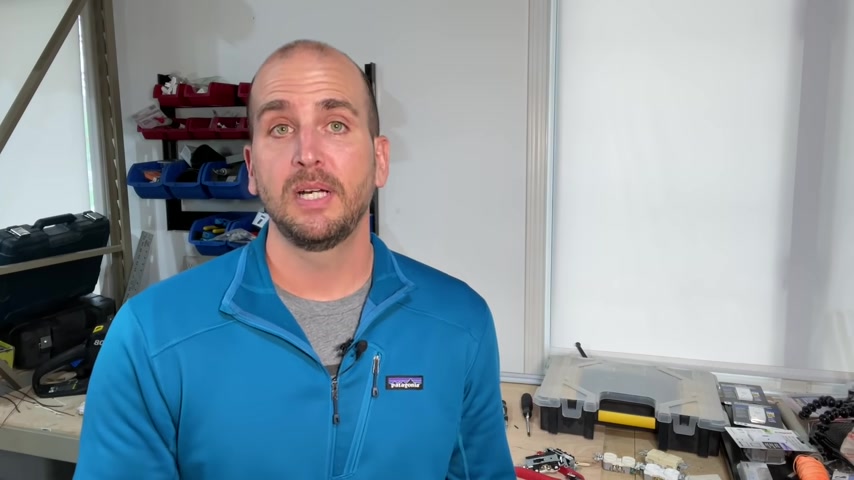
So depending on what region you're from , what electrician you use , who trained you , you can have different opinions on this over time .
But from the feedback on tens of thousands of people hitting the like and dislike , I would say three out of four people do ground facing down .
And now for number 10 , and that is this is technically not an outlet more properly .
This would be referred to as an receptacle .
Now , those are two of my friends that might have already left comments in this video saying stop calling in and out when it's a receptacle .
Uh But I think most people relate to outlets .
So that's why I use the word in my titles and in other videos that I do .
But just so , you know , the last one , number 10 is that this is technically called a receptacle .
So that's it .
That's the 10 things that you don't know about an outlet .
But let me know in the comments .
Are you a pro or are you ad I wire ?
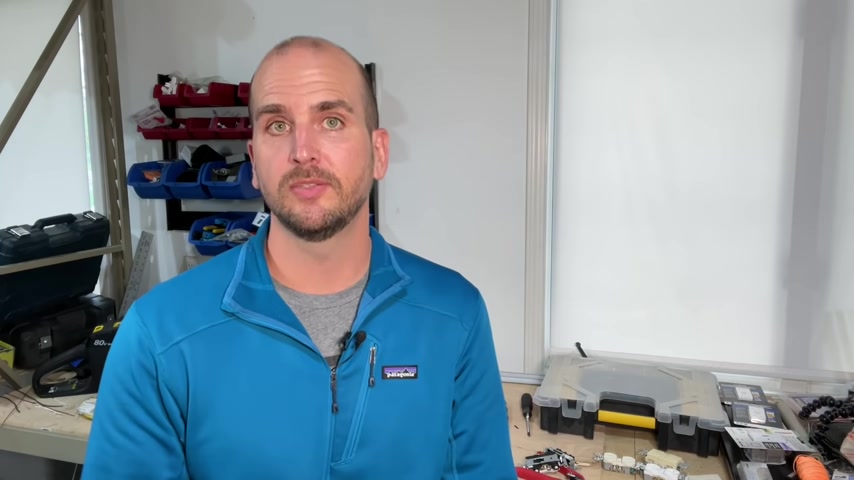
And how many of these things did you not know that's gonna really help myself in the channel ?
Just make sure we're targeting these videos for you as a viewer and make them as helpful as possible .
Now , any other comments you have are always welcome .
And if you haven't already , don't forget to hit that , subscribe and bell notification before taking off as we have multiple videos coming out per week to help you around your house with your repairs and improvements and we'll catch you on the next one .
Take care .
Are you looking for a way to reach a wider audience and get more views on your videos?
Our innovative video to text transcribing service can help you do just that.
We provide accurate transcriptions of your videos along with visual content that will help you attract new viewers and keep them engaged. Plus, our data analytics and ad campaign tools can help you monetize your content and maximize your revenue.
Let's partner up and take your video content to the next level!
Contact us today to learn more.